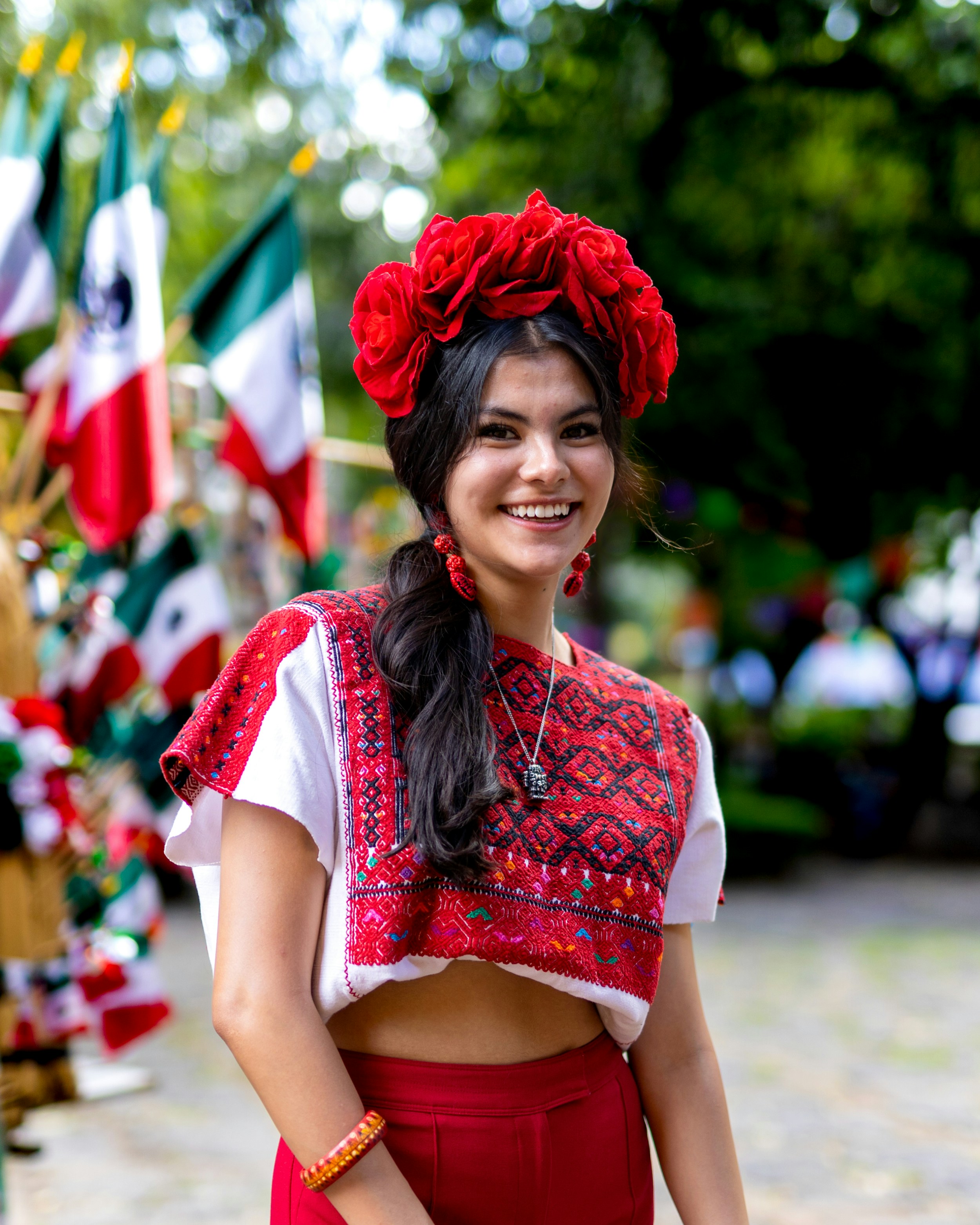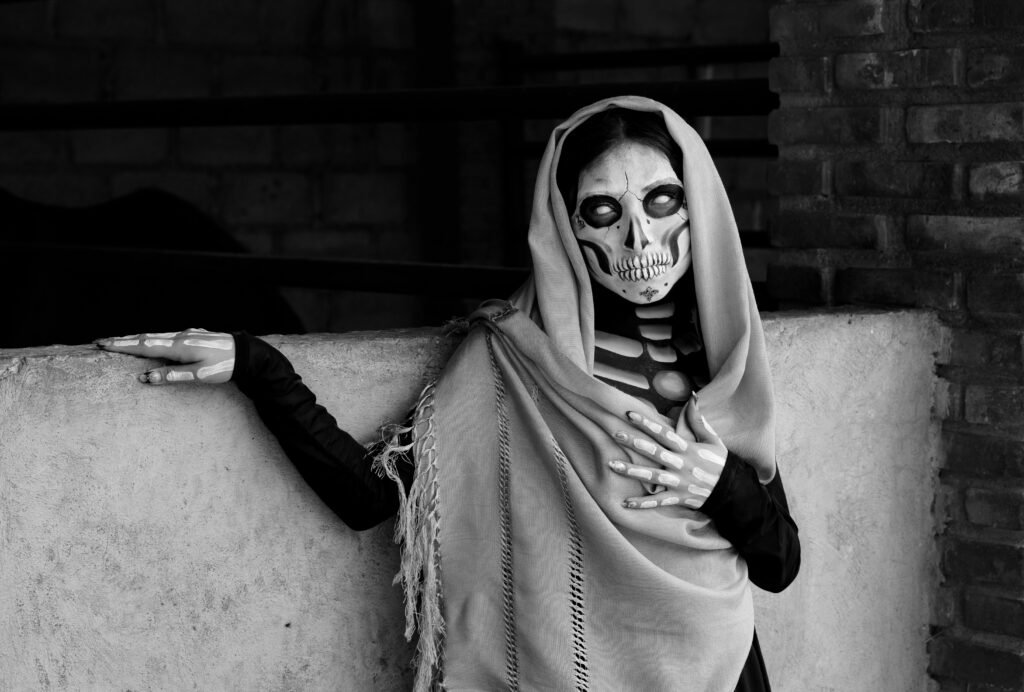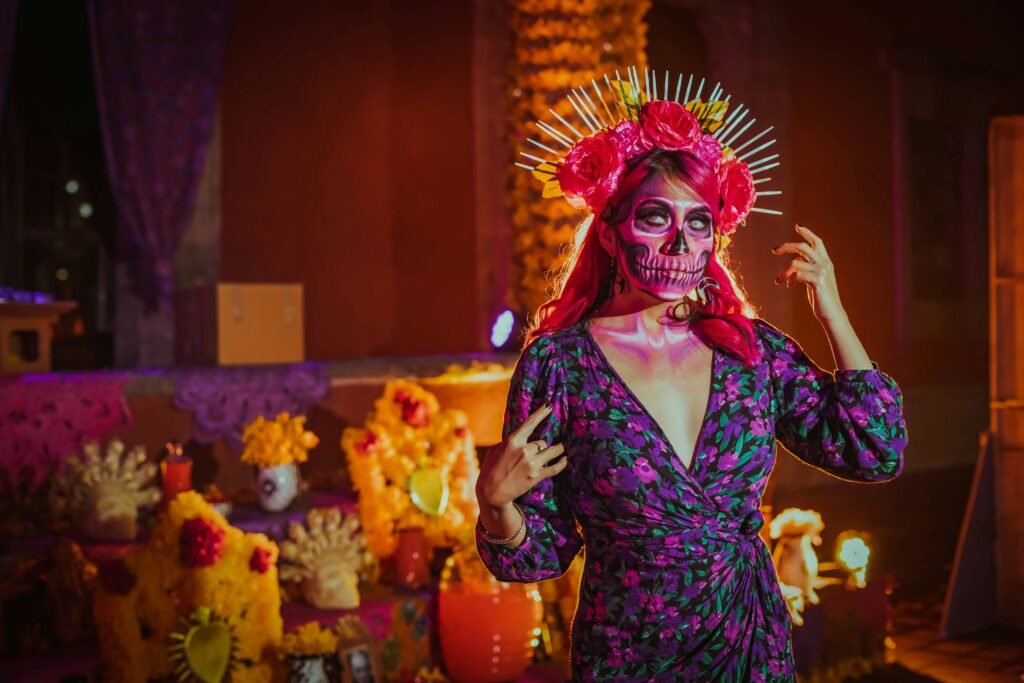
Introduction to Mexican Festivals
Mexico is a country renowned for its vibrant culture, and at the heart of this cultural tapestry lies an array of fascinating festivals. These celebrations are not merely occasions for joy and festivity; they offer a profound glimpse into the history, traditions, and indigenous roots that shape the Mexican identity. Festivals in Mexico serve to unify communities, honor ancestral customs, and celebrate life in its myriad forms.
The significance of festivals extends beyond entertainment. They are expressions of collective memory, showcasing the rich influences of indigenous peoples, colonial history, and contemporary society. Each festival is steeped in cultural narratives, with rituals and practices that have been passed down through generations. For instance, Día de los Muertos, or the Day of the Dead, is a celebration that honors deceased loved ones with vibrant altars and festive gatherings, showcasing the integral relationship Mexicans maintain with life and death.
Several noteworthy festivals illustrate the depth of this cultural celebration. Las Posadas ushers in the Christmas season with a reenactment of Mary and Joseph’s search for shelter. Carnival, celebrated prior to Lent, bursts with color and excitement through parades and dancing. Meanwhile, Independence Day on September 16th is a patriotic celebration that evokes profound national pride. Each festival reflects local traditions and customs, differing from region to region, yet all cultivating an inextricable bond with the past and present.
As this blog post unfolds, we will explore some of the most mesmerizing Mexican festivals, each offering insights into the extraordinary cultural heritage of Mexico. Through these celebrations, one can truly appreciate the spirit and resilience of the Mexican people, making them an essential experience for any traveler or culture enthusiast.
Day of the Dead: A Celebration of Life and Death
Dia de los Muertos, or Day of the Dead, is a vibrant Mexican festival that honors the lives of deceased loved ones. Celebrated primarily on November 1st and 2nd, this tradition is rooted in indigenous rituals and Catholic beliefs. It is a time for families to come together and remember those who have passed, ensuring that their spirits are welcomed back into the realm of the living. The festival offers a unique opportunity to acknowledge the cyclical nature of life and death, fostering a deep connection with ancestors.
One of the most significant customs associated with Day of the Dead is the creation of elaborate altars, known as ofrendas. These altars are adorned with photographs, mementos, and items that the deceased enjoyed in life, offering a spiritual pathway for them to return. Additionally, families present an array of food and drinks, including traditional dishes like pan de muerto, a sweet bread shaped like a skull. The inclusion of favorite foods acknowledges the connection between the physical and spiritual realms, reinforcing the bond of love that transcends death.
The vibrant marigold flower, or cempasúchil, plays a pivotal role in the festivities. Its bright orange hue symbolizes the sun, guiding spirits back to their families. Marigold petals are often scattered on altars and paths, creating a breathtaking visual that epitomizes the festival’s theme of joy amidst sorrow. The atmosphere during Dia de los Muertos is filled with music, dance, and laughter, embodying the belief that death is not the end, but a continuation of life’s journey.
Through these customs, Dia de los Muertos transforms the act of mourning into a celebration of life, allowing families to express their grief and love in a colorful and meaningful way. This festival serves as a profound reminder of the importance of family, memory, and the enduring connection between the living and the dead.

Guelaguetza: A Showcase of Oaxaca’s Indigenous Cultures
The Guelaguetza is an annual festival celebrated in the beautiful city of Oaxaca, a region renowned for its rich cultural heritage and diversity of indigenous communities. Rooted in pre-Hispanic traditions, the festival dates back centuries and reflects the profound significance of community and familial ties among the various ethnic groups in the region. Held on the last two Mondays of July, the Guelaguetza showcases the vibrant and intricate traditions of Oaxaca’s indigenous peoples, including the Zapotecs and Mixtecs, among others.
One of the defining characteristics of the Guelaguetza is its emphasis on the concept of ‘guelaguetza,’ a Zapotec term meaning ‘to give’ or ‘to share.’ This philosophy permeates the festival, highlighting the importance of mutual aid, cooperation, and reciprocity among community members. Each participating group presents a unique set of traditional dances, music, and costumes that embody their distinct cultural identities. As a result, the festival serves as a platform for these diverse communities to come together, share their uniqueness, and honor their heritage.
The vibrant performances during the Guelaguetza are a feast for the senses. Participants don intricate traditional clothing adorned with colorful embroidery, symbolizing their local history and customs. The rhythmic music complements the spectacular dances, which vary in style and form, showcasing their cultural narratives. This convergence of different indigenous groups creates a tapestry of sounds and sights that transports visitors to the heart of Oaxaca’s indigenous traditions.
As a celebration of unity and cultural pride, the Guelaguetza is more than just a festival; it is an embodiment of the resilience of Oaxaca’s indigenous peoples and their enduring spirit. For anyone seeking to immerse themselves in the richness of Mexican culture, this festival is an experience that is not to be missed.

Veracruz Carnival: A Spectacle of Color and Joy
The Veracruz Carnival is an annual celebration renowned for its vibrant parades, pulsating music, and dynamic dance performances. This lively event takes place in the coastal city of Veracruz, Mexico, attracting both locals and tourists alike. Historically, the carnival dates back to the colonial period, incorporating elements from indigenous, African, and Spanish cultures, which have contributed to its unique identity. The carnival typically occurs in February, culminating in a week-long celebration filled with excitement and revelry.
One of the most striking features of the Veracruz Carnival is its elaborate costumes. Participants often don vibrant, hand-crafted outfits adorned with beads, sequins, and feathers, reflecting both creativity and cultural heritage. The costumes are not merely decorative; they are steeped in symbolism and represent various themes, from historical figures to mythical creatures. This intricate costume design adds to the carnival’s visual splendor, offering a feast for the eyes as participants parade through the streets, bringing joy and celebration.
The atmosphere during the Veracruz Carnival is undeniably electric, fueled by the sounds of live music and the rhythm of dance. Numerous bands and musicians perform traditional and contemporary styles, creating an immersive experience that invites spontaneous dancing and celebration. Additionally, diverse competitions take place, including dance contests, costume awards, and musical showcases, igniting a sense of friendly rivalry among participants. These events are integral to the carnival’s spirit, as they foster community engagement and cultural pride.
In essence, attending the Veracruz Carnival is an opportunity to partake in a rich tapestry of cultural expression. The authentic experience of joyous celebrations, captivating performances, and colorful costumes showcases the festive spirit of the region, making it a must-see event for anyone looking to immerse themselves in Mexican culture.
Las Posadas: A Journey to Bethlehem
Las Posadas is a cherished Mexican festival that takes place each December, encompassing a rich blend of tradition, spirituality, and community. Its roots extend back to both Spanish and indigenous cultures, symbolizing the journey of Mary and Joseph as they sought refuge in Bethlehem. The festival usually begins on December 16 and lasts for nine nights, culminating in the celebration of Christmas. This reenactment, known as “los peregrinos” (the pilgrims), is not just an event but a communal experience that reinforces the values of compassion and hospitality.
During Las Posadas, families and communities gather to reenact the search for lodging by Mary and Joseph. Participants are divided into two groups: one representing the travelers seeking shelter, and the other embodying the innkeepers. The ensuing dramatization takes place, complete with the singing of traditional carols, prayers, and processions through neighborhoods. As the procession moves from house to house, the songs reflect pleas for hospitality, echoing the struggles of those in need.
The celebration fosters a deep sense of unity among participants, as strangers become friends while sharing the warmth of the holidays. Traditionally, every home that opens its doors offers food and drinks, often including tamales, atole, and sweet treats. This communal sharing not only embeds the teachings of kindness and generosity but also highlights the festive atmosphere that envelops the community throughout the nine nights of celebration. Furthermore, many families embrace their unique cultural variations of Las Posadas, providing an opportunity to explore the regional customs that enrich this festival.
Emphasizing the key virtues of empathy and togetherness, Las Posadas serves as more than just a festive occasion; it is a heartfelt reminder of the importance of caring for one another during the holiday season. Through communal singing, shared prayers, and treats, this festival embodies the spirit of Christmas in an unforgettable manner.
Feast of Our Lady of Guadalupe: A Day of Devotion
The Feast of Our Lady of Guadalupe, celebrated annually on December 12th, holds significant importance in Mexican culture and religious life. The festival honors the Virgin of Guadalupe, who is regarded as the patroness of Mexico and symbolizes the merging of Indigenous beliefs and Catholicism. According to tradition, she appeared to a peasant named Juan Diego in 1531 on the hill of Tepeyac, delivering a message of hope and unity. This miraculous encounter has profoundly shaped Mexican identity, creating a bond that transcends generations.
On this day, millions of pilgrims embark on a journey to the Basilica of Our Lady of Guadalupe, located in Mexico City. The pilgrimage often begins days in advance, with many devotees traveling long distances to pay their respects. People come from various regions across the country, donning traditional attire, and carrying offerings such as flowers and candles. The atmosphere is imbued with spirituality, as the faithful participate in prayer and reflection, making this occasion a deeply personal experience.
In addition to the religious aspects, the Feast of Our Lady of Guadalupe is characterized by vibrant cultural expressions. Traditional dances, such as the “Danza de los Tlacololeros” and folkloric performances, enliven the celebrations, showcasing the rich heritage of Mexico. Live music fills the air, with mariachis often serenading the crowds. Street vendors offer a variety of authentic Mexican foods, enhancing the festive spirit. These elements not only honor the Virgin’s legacy but also serve to unite diverse communities through shared faith and culture.
Overall, the Feast of Our Lady of Guadalupe is not merely a religious event; it encapsulates the heart of Mexican identity, intertwining faith, culture, and unity. Experiencing this celebration is essential for anyone aiming to truly understand the depth and richness of Mexican traditions.
Dia de la Independencia: National Pride and Celebration
Dia de la Independencia, celebrated annually on September 16th, is one of the most significant national holidays in Mexico. This day commemorates the start of the Mexican War of Independence, which began in 1810, marking the country’s journey toward sovereignty from Spanish colonial rule. The historical importance of this day is exemplified by the famed Grito de Dolores, a call to arms made by Miguel Hidalgo y Costilla in the small town of Dolores, which ignited a movement that ultimately led to independence in 1821.
In the days leading up to September 16th, cities across Mexico begin preparations for a grand celebration filled with activities meant to honor the nation’s rich history. The festivities typically commence the evening before, with the reenactment of the Grito de Dolores performed by the President of Mexico from the balcony of the National Palace in the capital, Mexico City. This powerful moment resonates deeply with citizens, as it symbolizes the spirit of resistance and the desire for freedom that traveled through generations.
The day of celebration is characterized by lively parades featuring traditional Mexican music, dance performances, and colorful displays of costumes representing various regions of the country. Families gather in squares and streets adorned with the national colors—green, white, and red—as they participate in the festivities. Fireworks light up the night sky, adding to the vibrant atmosphere of national pride that permeates every corner of the country. Street vendors offer traditional foods, and crowds join in singing the Mexican national anthem, showcasing their deep-rooted patriotism and collective joy.
Ultimately, Dia de la Independencia is not just a historical commemoration; it is a dynamic celebration of Mexican identity and culture, drawing people from all walks of life together in a shared experience of pride and joy. The sense of unity felt during this festival reflects the enduring legacy of the fight for independence and the ongoing commitment to uphold national values and traditions.
Celtic Festival: Bridging Cultures through Music and Dance
The Celtic Festival in Mexico stands as a remarkable celebration that intertwines the rich traditions of Mexico with that of Celtic heritage. This unique festival unites diverse communities, showcasing a variety of performances, workshops, and cultural activities that highlight how music and dance can serve as a bridge between different cultures. With its roots deeply embedded in both Mexican and Celtic histories, the festival not only entertains but also educates attendees about the distinct characteristics of each culture.
Each year, enthusiastic participants and visitors gather to experience the vibrancy of these two heritages. Musical performances feature traditional Celtic instruments such as the fiddle, harp, and bagpipes, interwoven with the rhythmic sounds of Mariachi bands and indigenous Mexican music. This integration manifests in dynamic performances that encourage audiences to appreciate the unique cultural expressions from both backgrounds. Dance plays a pivotal role here as well, with workshops allowing attendees to learn both Irish jigs and traditional Mexican folk dances.
The festival also offers a platform for artists and artisans from both cultures to showcase their crafts. Traditional crafts such as pottery and weaving, alongside Celtic knotwork and jewelry, reflect the richness of both traditions, inviting exchanges that deepen cultural understanding. Attendees can participate in discussions and forums, further exploring the connections between Mexican and Celtic histories. This emphasis on engagement encourages not only appreciation but also respect among diverse cultures, facilitating a meaningful exchange that transcends geographical boundaries.
In conclusion, the Celtic Festival in Mexico serves as an essential event for those keen on experiencing the rich blend of Irish and Mexican cultures. Through music, dance, and artistic expression, it highlights the importance of cultural exchange and appreciation, leaving a lasting impression on all who attend.
Conclusion: Experiencing the Heart and Soul of Mexico
Participating in Mexican festivals provides an unparalleled opportunity to immerse oneself in the vibrant culture and heritage of the nation. Each festival, rich in history and local traditions, serves as a window into the Mexican way of life, showcasing the diverse identities and values that shape communities across the country. Events like Día de los Muertos, Guelaguetza, and Las Posadas exemplify the blending of indigenous customs and Spanish influences, revealing the complex tapestry of Mexico’s cultural landscape.
These celebrations are not merely events but are collective expressions of identity, where families and communities come together to honor their past and celebrate their present. Engaging in festivals allows participants to experience the warmth of Mexican hospitality, taste traditional culinary delights, and witness breathtaking performances, all while forging deeper connections with local cultures. The colors, sounds, and emotions experienced at these events bring to life the stories and traditions that have been passed down through generations, highlighting the importance of community and belonging.
Moreover, attending these festivals can lead to a greater appreciation for the resilience and creativity that characterize Mexican society. It encourages visitors to step outside their daily routines, engage with locals, and partake in customs that celebrate life’s moments—both solemn and joyful. Experiencing Mexican festivals firsthand enhances one’s understanding of the nation’s values, such as family unity, respect for ancestors, and the joyful embrace of life’s ephemeral nature.
In summary, immersing oneself in the vibrant festivals of Mexico is an essential part of understanding the nation’s cultural identity. Those who take the opportunity to participate will undoubtedly leave with treasured memories and a deeper appreciation for the rich mosaic of traditions that define Mexico as a nation. Embrace the heart and soul of Mexico—its festivals await your experience.
